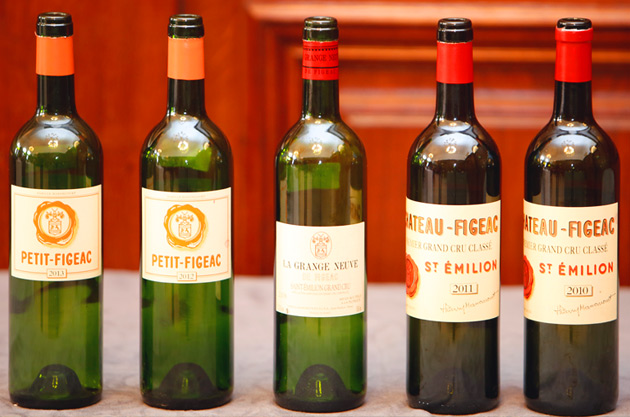At the Decanter Fine Wine Encounter 2016 we were treated to a masterclass by Frédéric Faye, managing director of Château Figeac and Hortense Idoine-Manoncourt, daughter of legendary owner Thierry Manoncourt, and president of Château Figeac. Over the hour they took the sold out class through the history and winemaking philosophy of the château...
The Château
Château Figeac is a leading light in St. Emilion on the Bordeaux right-bank. The château is situated very close to Pomerol and next to Cheval Blanc. The main vineyards are planted on three gravel hills, and it’s this high gravel content in the soil that sets the Château apart from others on the right bank, allowing for a high proportion of Cabernet in their blends. Figeac is currently classified as a 1er Grand Cru Classé (B).
View all of Decanter’s Château Figeac tasting notes
Château Figeac History
The estate dates back to Roman times and the second century A.D., when the Figeacus family gave the estate it’s name. Roman ruins are still found on the site today. In 1892 the Manoncourt family acquired the estate and made it the winery we know today. Thierry Manoncourt was the first to settle and live at the estate rather than just have it has a holiday home, and it was under his guidance that Figeac made great leaps forward creating the wines we now know.
The Wine Making
Whilst St-Emilion is kingdom of Merlot planted on clay and limestone soil, Figeac has gravel on it’s three hills which is more suited to Cabernet , much like the wines of the Bordeaux left bank. The estate grows; 35% Cabernet Sauvignon, 35% Cabernet Franc and 30% Merlot. Château Figeac is the largest estate in St-Emilion with 54 hectares of land of which 40 hectares are under vine. The oldest wine are 95 years old, and the average age of the low density vines on the property is 40 years.
Alcoholic fermentation takes place in wood and the malolactic in stainless steel tanks which were introduced by Thierry Manoncourt – Figeac was the first estate on the right bank to use stainless steel. The wine is aged in 100% new oak barriques , which Frédéric Faye believes is possible because of the properties high proportion of Cabernet. The estate uses five different barrel coopers to create barrels to meet their exact specifications.
Second Wines
In 1945 Thierry Manoncourt was the first Right Bank producer to bottle a second wine under the name La Grange Neuve de Figeac. This was originally a plot specific wine which was revamped to become a second selection wine, which is created for drinking earlier . For the 2012 vintage, this wine was renamed Petit Figeac.

Tasting
Frédéric Faye highlighted the need for cellar ageing, and talked the masterclass through the change along the ageing curve. Cigar and cedar was a signatory note of all the wines tasted.
- Petit Figeac 2013
- Petit Figeac 2012
- La Grange Neuve de Figeac 2008
- Château Figeac 2011
- Château Figeac 2010
- Château Figeac 2009
- Château Figeac 2006
- Château Figeac 2005
- Château Figeac 2004
- Château Figeac 1986

Thierry Manoncourt of Chateau Figeac: obituary
Over 1000 mourners attended the funeral of Thierry Manoncourt of Chateau Figeac, who has died aged 92.







